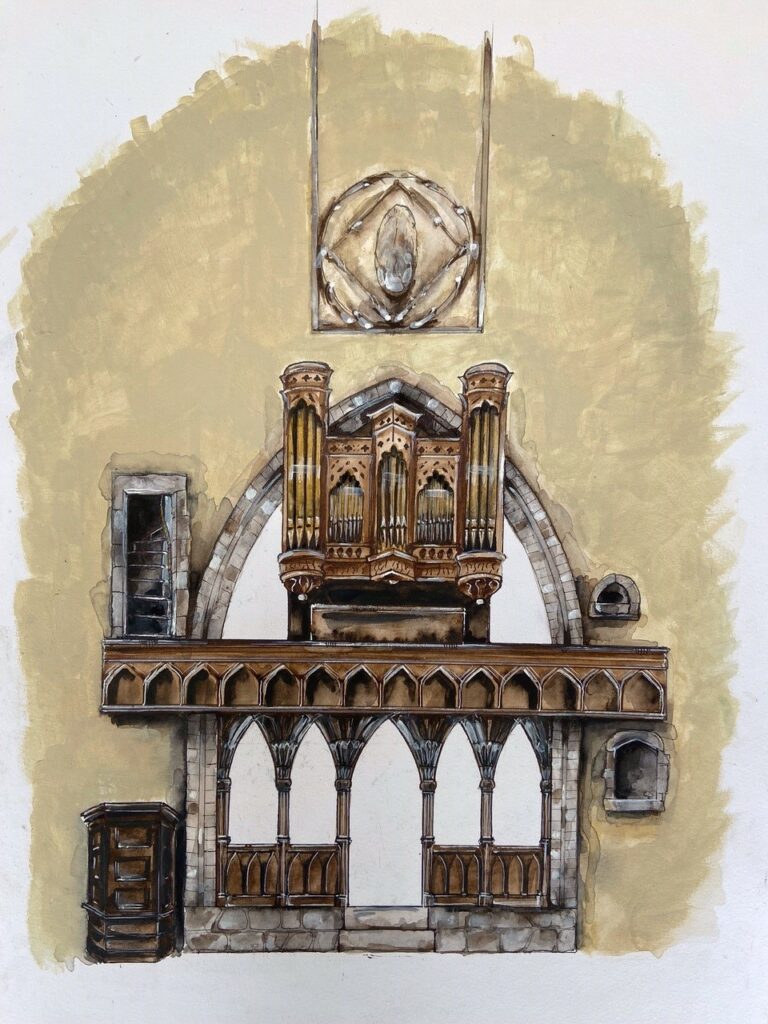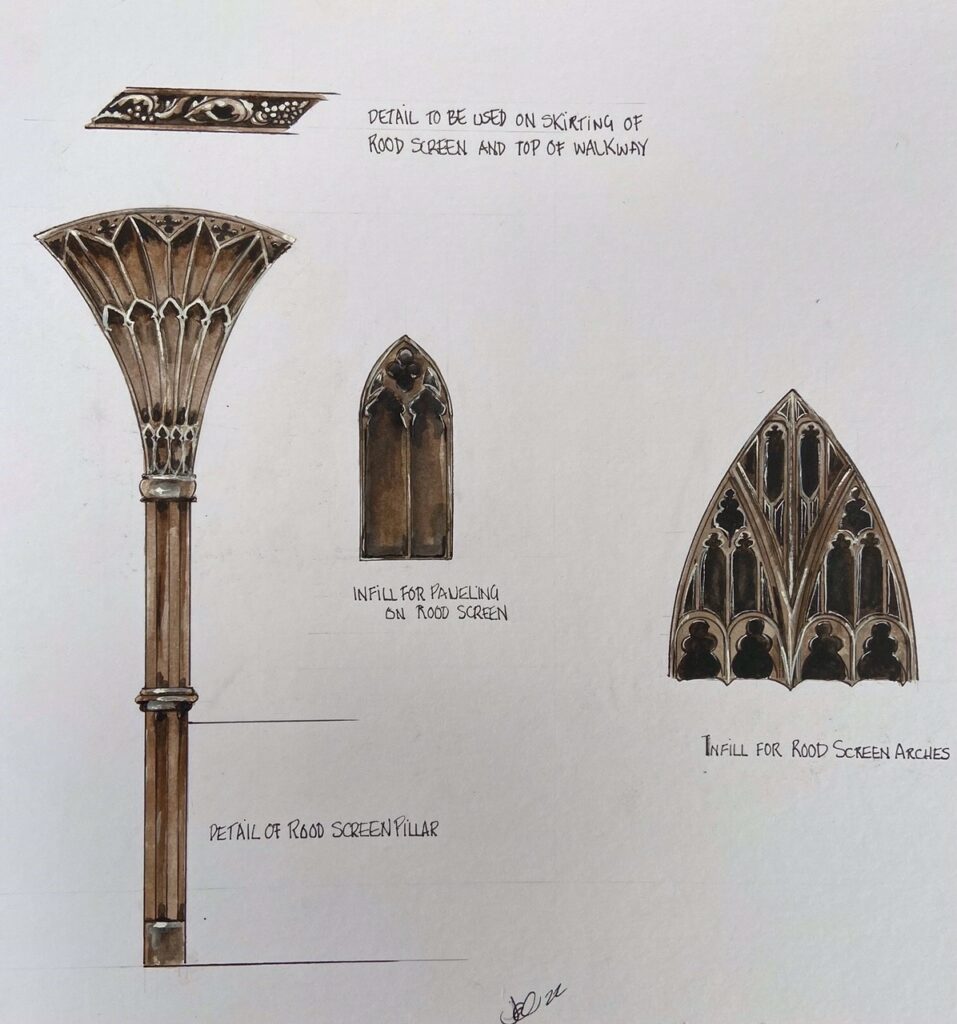See a part of St Mary’s Church as it might have looked in 1724, on the day of John Kyrle’s Funeral, and the man himself in his coffin (which you wouldn’t have seen on the day!)
Step 1 – Get the App

The Rood Screen (1486)
When Thomas Chippenham was Vicar of Ross in 1486 he began the process of erecting a Rood Screen and Loft. Very much a feature of late Medieval churches, rood screens separated the the main body of the church (the Nave) from the Chancel. Originally the loft would have supported statues depicting the Crucifixion (the Holy Rood) – Christ on the cross in the centre flanked by St Mary, his mother and St John the Evangelist. These figures would most likely have disappeared at the Reformation, later in the 16th Century.
Ross’s screen was a very substantial affair. We know that because there is firm evidence that it would, at some stage, have supported an altar (the piscina in the wall on the south side of the arch), and therefore a priest. A manuscript of 1658 describes it as an “organ loft” – see below.
We believe that the screen was removed in the first half of the 19th century.
Our reconstruction is just a guess; we have no visual evidence and very few accounts to draw on. The Historian Thomas Fosbroke, writing in his guide to the Wye Tour in 1821 tells us that at the insistence of Chippenham “a curious and beautiful Rood Loft was erected in the Church (after the fashion of the Rood Loft at Ledbury) at public charge.” Fragments of Ledbury’s screen remain and we know that this in turn was similar to Bosbury’s screen which does exist today. We’ve based our recreation on those.

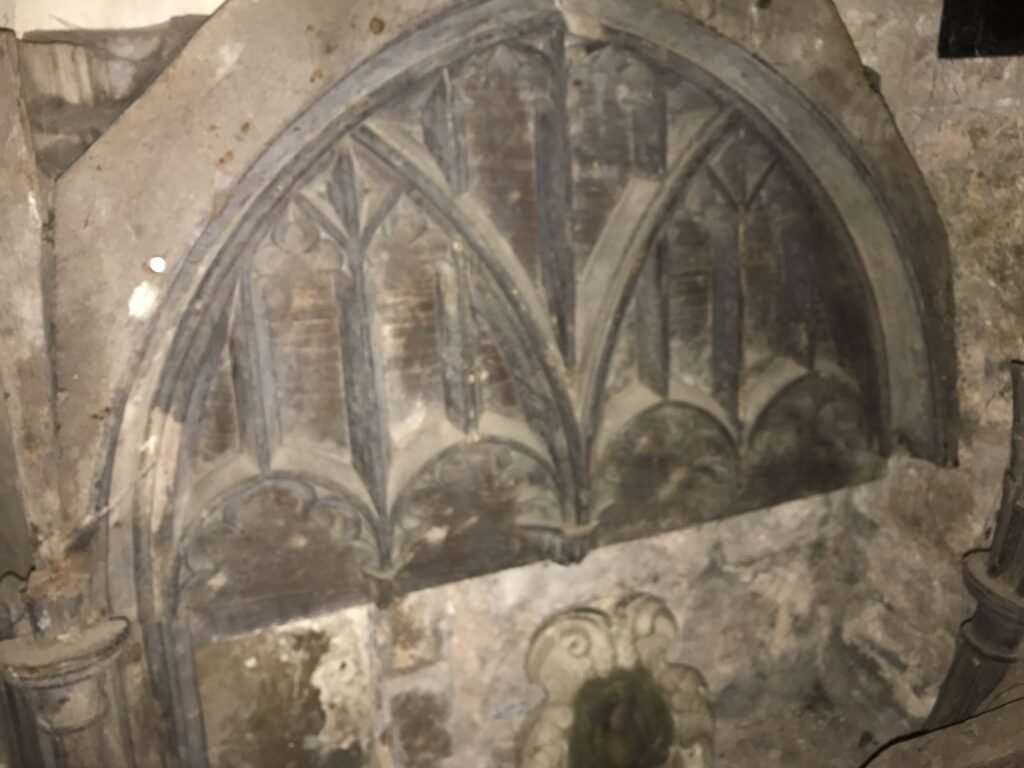

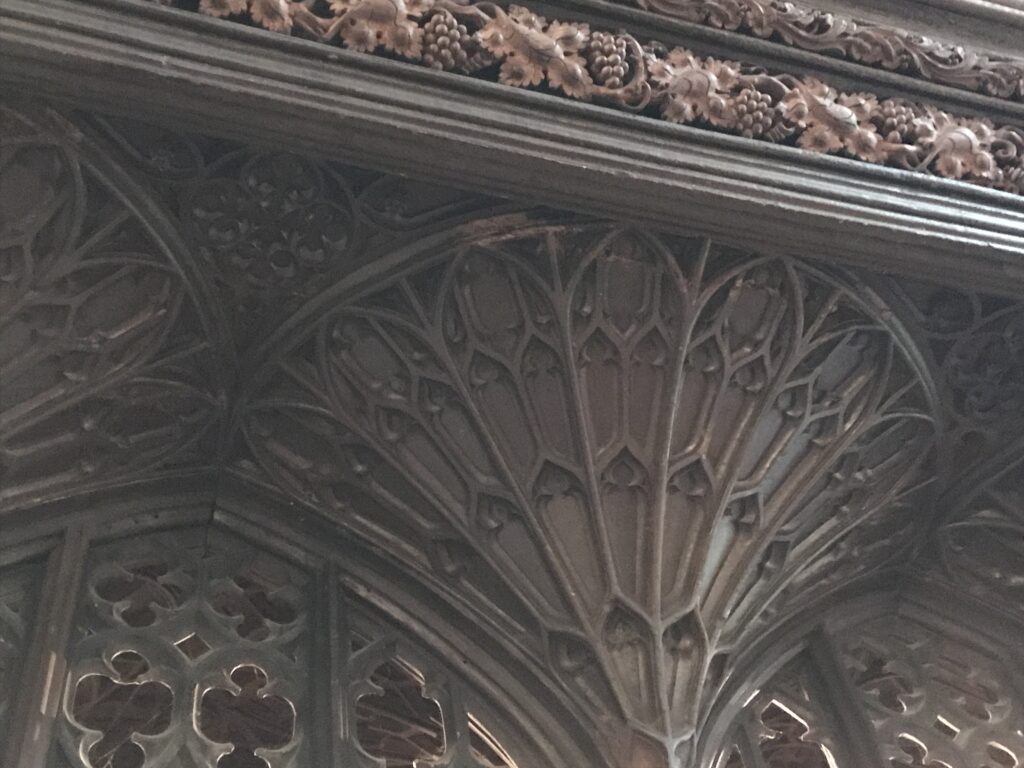

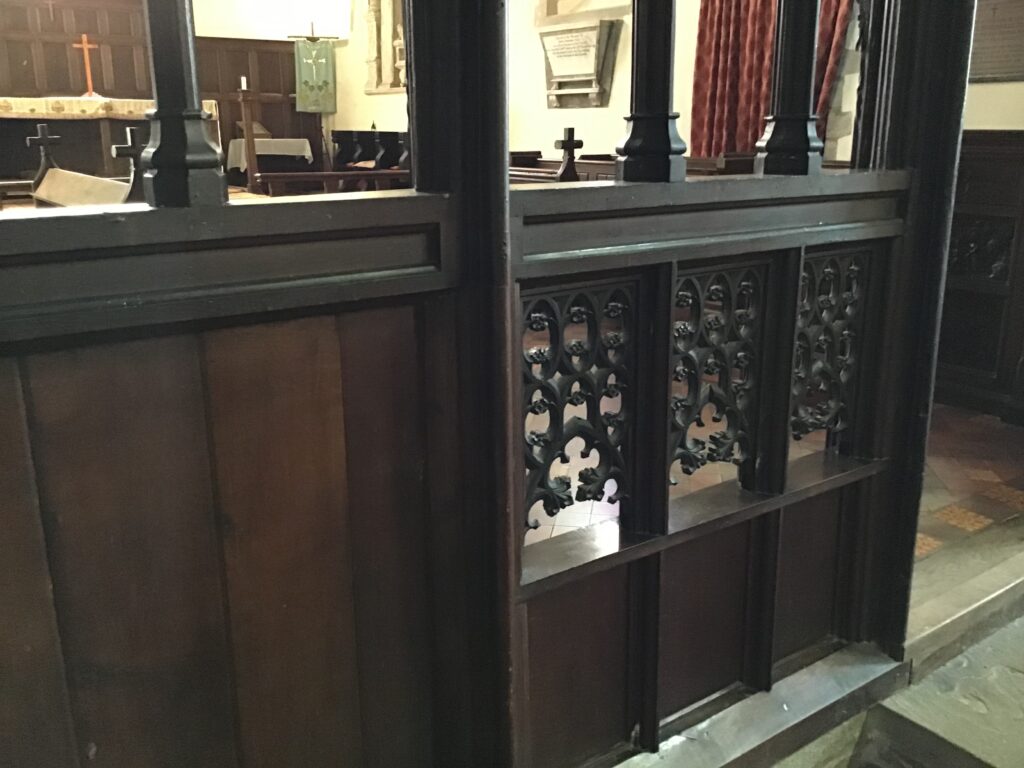
The Organ
A manuscript of 1658 describes the loft / screen as an “organ loft” so we can be sure pretty sure that there was an organ there at that point. Fosbroke (1821) tells us that a new organ was built in 1726, and that “the front of it is said to have originally belonged to Salisbury Cathedral.” He doesn’t say where it was (probably on gallery at the west end of the church), but elsewhere mentions that “the ancient rood-loft is said to have contained an Organ” (so by 1821 it no longer did). The Salisbury organ in question was built for Salisbury by Thomas Harris in 1668 and sold at auction in Bristol in 1678 for £50.
With a slight flight of fantasy, perhaps, we can deduce that the Salisbury organ may have been on our Rood Screen in 1724. Well, we’ve assumed that anyway – it looks very fine there!
The 1726 organ (with the Salisbury case) was replaced in 1827 when it was sold to the then new Parkend Church near Lydney, where it can still be seen (albeit covered in white paint).
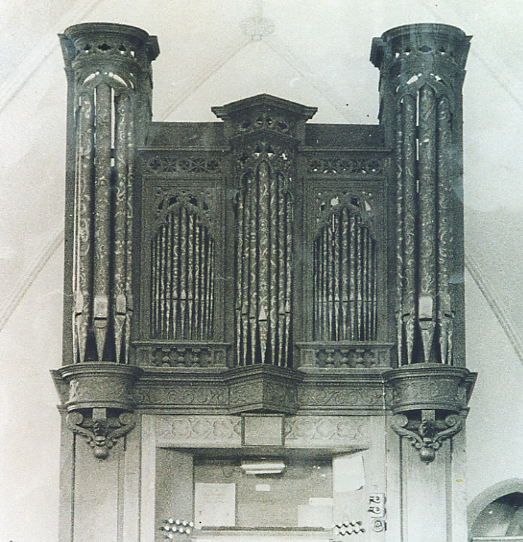
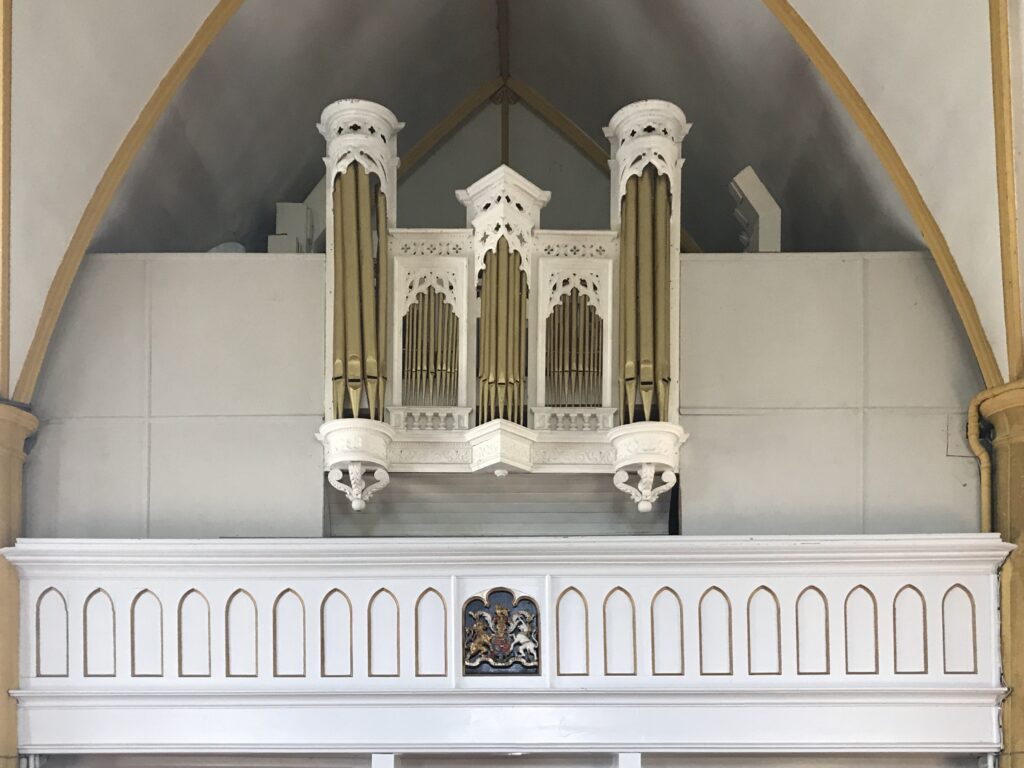
Other things to spot
The Chancel Arch, in which the loft and screen stood, was raised in 1878 by about 6 feet. It must have been very cramped before that. Notice also the piscina (small sink in which the communion vessels were washed after a Mass) in the wall on the south side. This one is a Victorian replacement for the remains of the one they found there beneath the plaster that was removed from the walls. It is sure proof that there would have been an altar on the screen.
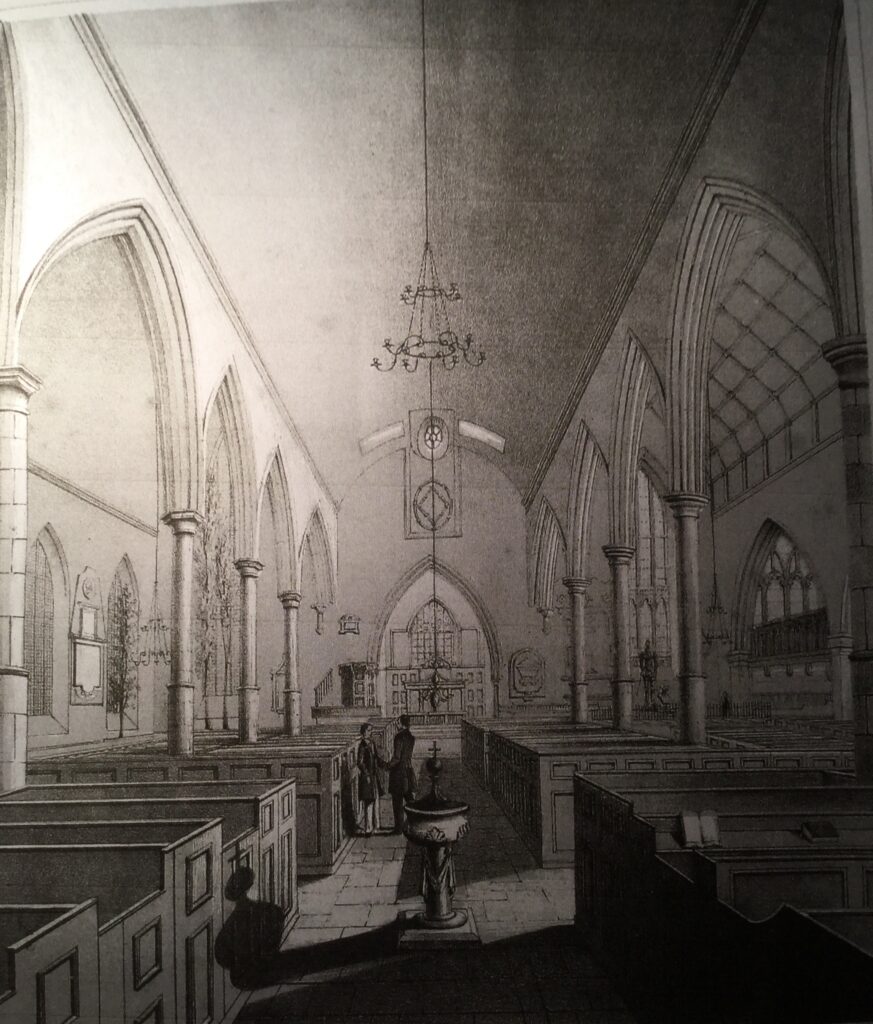
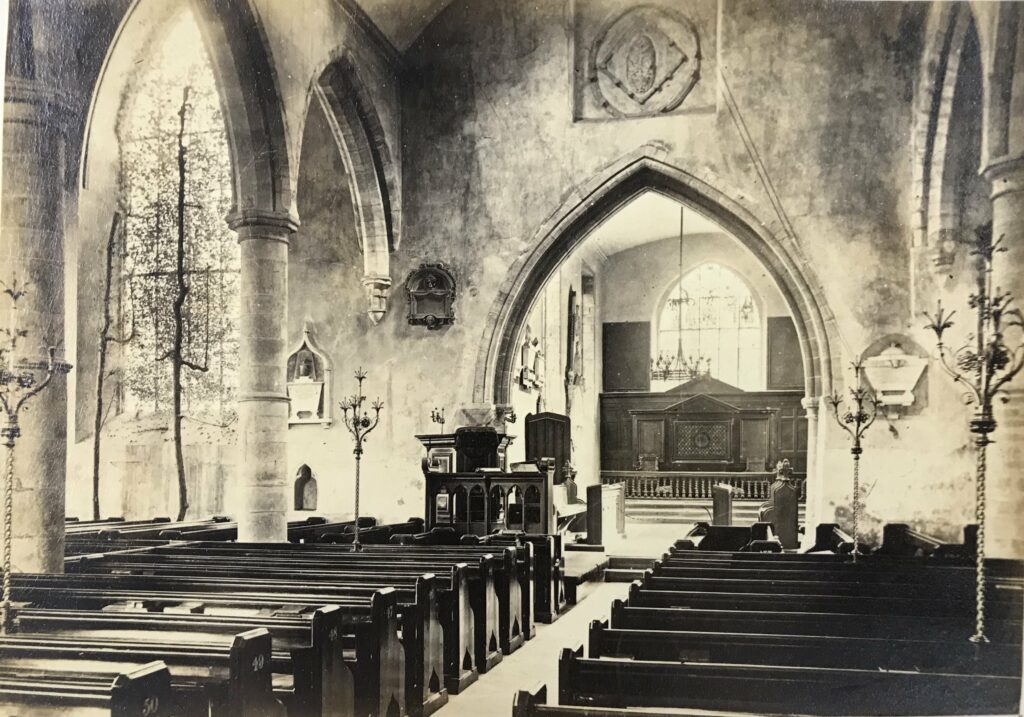
The artwork for the rood screen has been created by Julie Cannon
